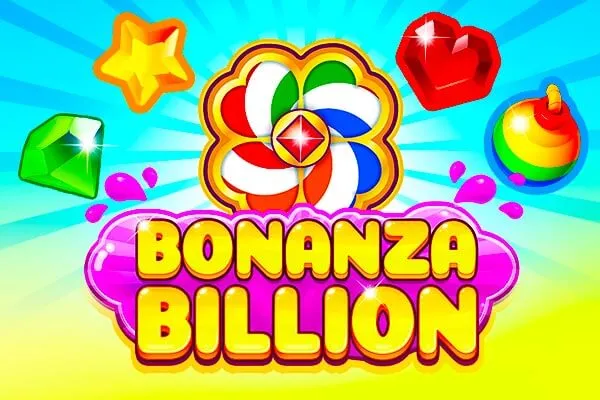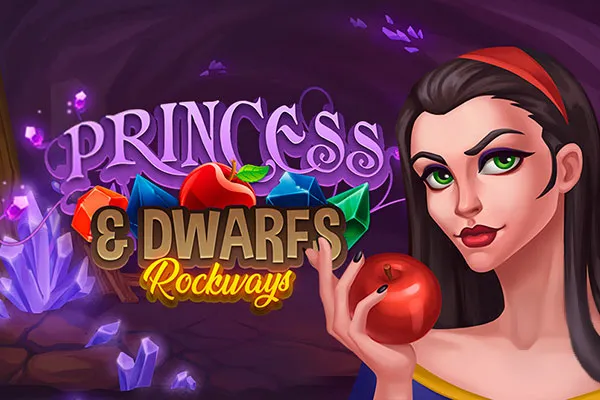Mission Prerna: Transforming Elementary Education in Uttar Pradesh
Mission Prerna is a flagship program launched by the Government of Uttar Pradesh (UP), India, aimed at improving the quality of elementary education in the state. With a focus on foundational learning and achieving measurable outcomes, Mission Prerna strives to ensure that every child in UP acquires essential literacy and numeracy skills by the end of Class 5. This article delves into the objectives, strategies, implementation, impact, and future of Mission Prerna, providing a comprehensive overview of this ambitious educational initiative.
Understanding the Need for Mission Prerna
Uttar Pradesh, being India's most populous state, faces significant challenges in providing quality education to its large student population. Historically, learning outcomes in elementary schools have been below par, with many children failing to achieve basic literacy and numeracy skills. Several factors contribute to this, including:
- Inadequate Infrastructure: Many schools lack basic facilities such as classrooms, toilets, and drinking water.
- Teacher Shortages: A shortage of qualified teachers, particularly in rural areas, affects the quality of instruction.
- High Student-Teacher Ratio: Overcrowded classrooms hinder individual attention and effective teaching.
- Lack of Resources: Limited access to learning materials and teaching aids impacts the learning environment.
- Socio-Economic Factors: Poverty, social inequalities, and parental illiteracy contribute to poor learning outcomes.
Recognizing these challenges, the UP government launched Mission Prerna to address these systemic issues and transform elementary education in the state. The mission aims to create a conducive learning environment, empower teachers, and ensure that every child achieves their full potential.
Objectives of Mission Prerna
The primary objectives of Mission Prerna are to:
- Improve Learning Outcomes: Ensure that all children in Classes 1 to 5 achieve foundational literacy and numeracy skills by March 2023 (later revised due to the pandemic).
- Enhance Teacher Capacity: Provide teachers with training, resources, and support to improve their teaching practices.
- Strengthen School Infrastructure: Improve school facilities and create a conducive learning environment.
- Promote Community Participation: Engage parents, community members, and other stakeholders in the education process.
- Monitor and Evaluate Progress: Track student learning outcomes and use data to inform decision-making and improve program effectiveness.
Key Strategies and Components of Mission Prerna
Mission Prerna employs a multi-pronged approach to achieve its objectives, focusing on several key strategies and components:
1. Prerna Lakshya (Learning Goals)
Mission Prerna defines specific, measurable, achievable, relevant, and time-bound (SMART) learning goals for each grade level in literacy and numeracy. These goals, known as Prerna Lakshya, serve as benchmarks for student achievement. For example:
- Class 1: Students should be able to recognize and read simple words and numbers.
- Class 2: Students should be able to read short paragraphs and perform basic addition and subtraction.
- Class 3: Students should be able to read longer texts, solve simple word problems, and understand basic mathematical concepts.
- Class 4: Students should be able to read with comprehension, write simple essays, and perform multiplication and division.
- Class 5: Students should be able to read complex texts, write detailed essays, and solve multi-step mathematical problems.
2. Prerna Suchi (Learning Indicators)
To track progress towards achieving Prerna Lakshya, the mission uses Prerna Suchi, a set of learning indicators that define specific skills and competencies that students should acquire at each grade level. These indicators provide a framework for assessing student learning and identifying areas where they need additional support.
3. Prerna Gyanotsav (Learning Festival)
Prerna Gyanotsav is a state-wide assessment program conducted regularly to evaluate student learning outcomes and identify areas for improvement. The assessments are designed to be simple, engaging, and aligned with Prerna Lakshya and Prerna Suchi. The results of Prerna Gyanotsav are used to inform teacher training, resource allocation, and program adjustments.
4. Teacher Training and Capacity Building
Mission Prerna places a strong emphasis on teacher training and capacity building. Teachers are provided with regular training on effective teaching methods, classroom management techniques, and the use of teaching-learning materials (TLMs). The training programs are designed to be practical, hands-on, and relevant to the needs of teachers in the classroom.
5. Teaching-Learning Materials (TLMs)
The mission provides schools with a range of TLMs, including textbooks, workbooks, charts, and other resources designed to make learning more engaging and effective. These materials are aligned with Prerna Lakshya and Prerna Suchi and are designed to support teachers in delivering high-quality instruction.
6. School Leadership Development
Mission Prerna recognizes the importance of strong school leadership in driving educational improvement. The mission provides training and support to head teachers and other school leaders to improve their leadership skills, enhance their ability to manage schools effectively, and create a positive school culture.
7. Community Participation
The mission promotes community participation in education through various initiatives, such as School Management Committees (SMCs) and parent-teacher meetings. These platforms provide opportunities for parents, community members, and other stakeholders to engage in the education process, provide feedback, and support school improvement efforts.
8. Monitoring and Evaluation
Mission Prerna uses a robust monitoring and evaluation system to track progress towards its goals. Data on student learning outcomes, teacher attendance, school infrastructure, and other indicators are collected regularly and used to inform decision-making and improve program effectiveness. The data is also used to identify schools and teachers that need additional support.
Implementation of Mission Prerna in Uttar Pradesh
Mission Prerna is implemented across all elementary schools in Uttar Pradesh. The implementation process involves several key steps:
- Awareness and Sensitization: Creating awareness among teachers, parents, and community members about the objectives and strategies of Mission Prerna.
- Training and Capacity Building: Providing teachers with training on effective teaching methods and the use of TLMs.
- Assessment and Data Collection: Conducting regular assessments to track student learning outcomes and collect data on key indicators.
- Planning and Resource Allocation: Developing school improvement plans based on assessment data and allocating resources to support implementation.
- Monitoring and Supervision: Regularly monitoring school activities and providing support and guidance to teachers and school leaders.
- Community Engagement: Engaging parents, community members, and other stakeholders in the education process.
Impact of Mission Prerna
While a comprehensive, long-term evaluation is ongoing, initial reports and data suggest that Mission Prerna has had a positive impact on elementary education in Uttar Pradesh. Some of the key achievements include:
- Improved Learning Outcomes: Student learning outcomes in literacy and numeracy have shown improvement, particularly in the early grades.
- Enhanced Teacher Capacity: Teachers have reported increased confidence and improved teaching skills as a result of the training programs.
- Increased Community Participation: Community participation in education has increased, with more parents and community members actively involved in school activities.
- Improved School Infrastructure: School facilities have been upgraded, with improvements in classrooms, toilets, and drinking water facilities.
- Increased Enrollment and Attendance: Enrollment and attendance rates in elementary schools have increased.
However, challenges remain, including ensuring that all children achieve Prerna Lakshya, addressing teacher shortages, and improving the quality of education in remote and underserved areas.
Challenges and the Way Forward
Despite the progress made, Mission Prerna faces several challenges:
- Sustaining Momentum: Maintaining the momentum of the mission and ensuring long-term sustainability.
- Addressing Teacher Shortages: Addressing the shortage of qualified teachers, particularly in rural areas.
- Improving Quality of Education: Ensuring that all children receive a high-quality education, regardless of their background or location.
- Reaching Marginalized Communities: Reaching marginalized communities and ensuring that all children have access to education.
- Integrating Technology: Effectively integrating technology into the classroom to enhance teaching and learning.
To address these challenges, the following steps are crucial:
- Continued Investment: Continued investment in education, including teacher training, infrastructure development, and resource allocation.
- Strengthening Monitoring and Evaluation: Strengthening the monitoring and evaluation system to track progress and identify areas for improvement.
- Promoting Innovation: Promoting innovation in education, including the use of technology and new teaching methods.
- Enhancing Community Participation: Enhancing community participation in education and empowering parents and community members to play an active role in their children's education.
- Focusing on Equity: Focusing on equity and ensuring that all children have access to a high-quality education, regardless of their background or location.
Conclusion
Mission Prerna represents a significant effort by the Government of Uttar Pradesh to transform elementary education and improve learning outcomes for millions of children. By focusing on foundational literacy and numeracy skills, empowering teachers, and engaging communities, Mission Prerna has the potential to create a brighter future for the children of Uttar Pradesh. While challenges remain, the mission's commitment to continuous improvement and innovation provides a strong foundation for achieving its goals and ensuring that every child has the opportunity to reach their full potential. The success of Mission Prerna can serve as a model for other states in India and developing countries facing similar challenges in elementary education.
Related Pages
- Live Sakuma Share Price Today: Latest NSE Updates for Indian Investors!
- जियो फाइनेंशियल सर्विसेज: आसान लोन और सर्वश्रेष्ठ फाइनेंशियल समाधान अब आपके लिए!
- Deepinder Goyal's Wife: Shocking Secrets of the Zomato CEO's Private Life Revealed!
- Latest NSE Update: Bajaj Hindusthan Stocks Soar – Unlock High Returns in India's Hottest Market Pick!
- 7th Pay Matrix 2024: Unlock Maximum Salary Hikes for Indian Government Employees!









